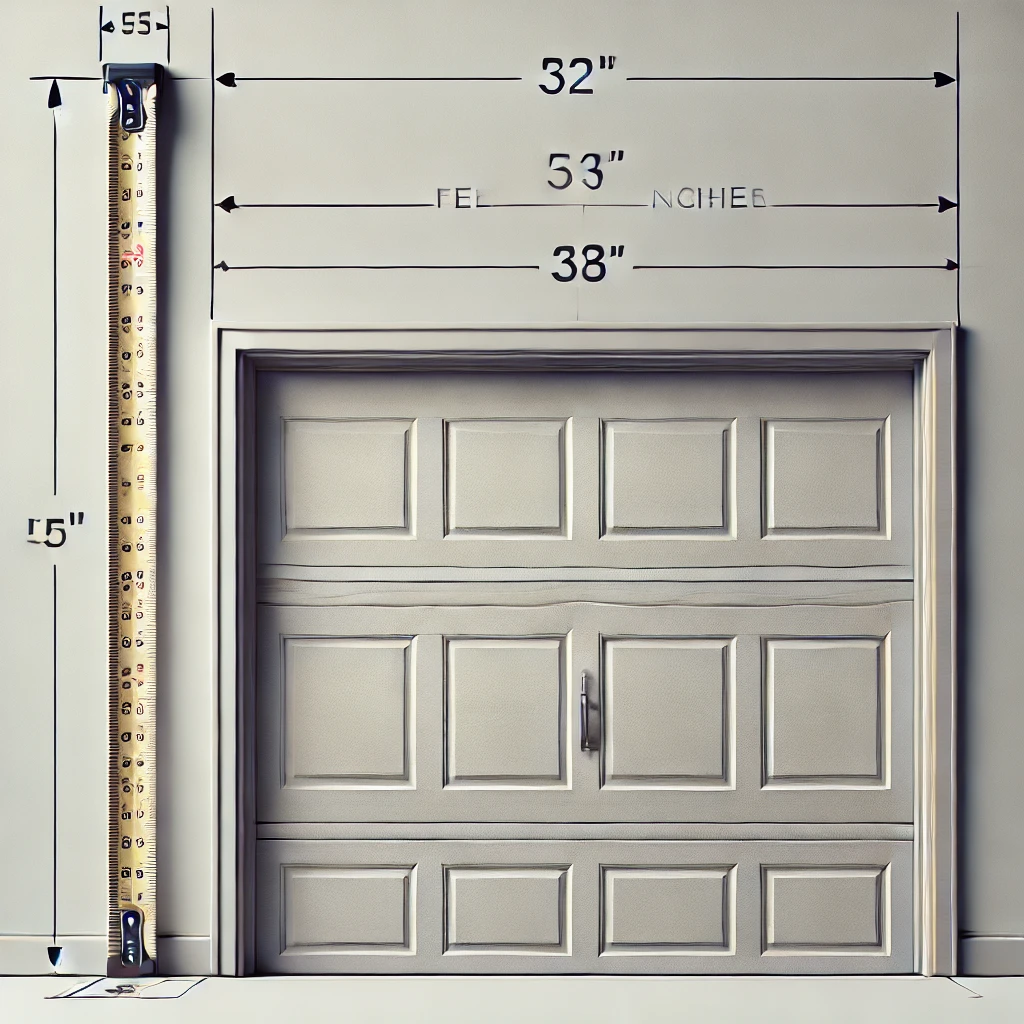4 Jaw-Dropping Reasons Garage Door Height Is More Important Than You Think!

Selecting the right garage door height enhances your home’s functionality, security, and overall appearance. Whether you’re installing a new door or replacing an existing one, understanding the standard sizes and how to measure your space accurately ensures that your garage door fits perfectly and operates smoothly. In this guide, we’ll explore the standard sizes for single- and double-car garage doors, discuss why choosing the correct height is essential, and provide detailed instructions on measuring your garage door opening. We’ll also cover additional considerations like headroom, obstructions, and material choices that can impact your decision. Keep reading to learn everything you need to know about garage door height. This information will help you make an informed choice that complements your home’s style and meets your practical needs. What Are the Standard Garage Door Sizes? Garage doors come in various sizes to suit different garage types, vehicle sizes, and homeowner preferences. Understanding the standard garage door sizes will help you make an informed decision: Should You Replace or Repair Your Garage Door? Deciding whether to replace or repair your garage door is an important consideration that depends on several factors. Here’s a detailed look at what you should consider: Why Garage Door Size Matters: Four Key Reasons Ensuring Proper Fit and Functionality Selecting the correct garage door size ensures the door fits within the frame and operates smoothly. A door that is too small may leave gaps that allow water, debris, or pests to enter, while a too-large door can be difficult to install and may not fit properly within the opening. Proper sizing ensures that your door operates efficiently, providing a snug fit that protects your garage’s contents and maintains its structural integrity. Enhancing Aesthetic Appeal Your garage door plays a significant role in your home’s curb appeal, as it’s often one of the most prominent features visible from the street. Choosing a door proportionate to your home’s facade enhances the overall aesthetic and creates a harmonious look. A well-sized door that complements your home’s architectural style—whether modern, traditional, or rustic—can significantly increase its visual appeal and market value. Boosting Insulation and Energy Efficiency A garage door that fits perfectly within its frame is essential for maintaining insulation and energy efficiency. Gaps around the door can cause drafts, leading to temperature fluctuations in your garage and affecting the comfort of adjacent rooms. Over time, this can increase your energy bills as your HVAC system works harder to maintain a stable indoor temperature. Choosing the right size and an insulated door can improve your home’s overall energy efficiency, making it easier to control heating and cooling costs. Maximizing Safety and Security A correctly sized garage door is crucial for ensuring the safety and security of your home. A door that doesn’t fit properly may not close fully, leaving your garage vulnerable to intruders. Also, improper sizing can lead to mechanical issues, such as the door becoming stuck or misaligned, posing safety hazards. By selecting the right size, you ensure your garage door is secure and functions smoothly, protecting your belongings and family. How to Measure Your Garage Door for the Perfect Fit Accurate measurements are essential when ordering a new garage door. Here’s a step-by-step guide to help you measure your garage door opening: Step 1: Measure the Width Start by measuring the width of the garage door opening from the inside of one side to the other. Use a tape measure and measure at the widest point. If your garage walls are uneven, take multiple measurements to ensure accuracy. Record the largest measurement to ensure the door will fit properly. Step 2: Measure the Height Next, measure the height of the garage door opening from the floor to the top of the door frame. As with the width, measure at the tallest point to account for any irregularities in the floor or ceiling. Accurate height measurements ensure the door closes entirely and operates smoothly. Step 3: Measure the Side Room and Headroom The side room refers to the space between the edge of the garage door opening and the wall. Measure both sides to ensure enough room for the tracks and springs. Typically, you’ll need at least 3.5 inches on each side. Headroom is the space between the top of the door opening and the ceiling. This area is essential for the door’s track system and the garage door opener. Standard doors require at least 10 to 12 inches of headroom, but low-clearance options are available if your space is limited. Additional Considerations When Measuring a Garage Door Opening Checking for Obstructions Before installing a new garage door, inspect the area for any obstructions that could interfere with its installation or operation. Common obstructions include pipes, electrical outlets, light fixtures, and storage shelves. These may need to be relocated or adjusted to ensure the garage door repair or installation can be completed properly and operate without hindrance. Taking Note of the Floor Slope If your garage floor slopes intentionally for drainage or due to settling, it can affect how the door sits when closed. Measure the slope by checking the difference in height at various points along the floor. A significant slope may require adjustments during installation or a specialized bottom seal to prevent gaps when the door is closed. Other Factors to Consider Frequently Asked Questions (FAQs) What is the height of a standard garage door? The standard height of a garage door is 7 feet (213 cm), typical for most residential garages. This height accommodates standard vehicles like sedans, SUVs, and light trucks. Some homes may opt for an 8-foot door, especially if they have larger vehicles or require more clearance for overhead storage. What is the ideal height of a garage? The ideal height of a garage is around 9 to 10 feet. This provides enough clearance for most vehicles, including taller SUVs and trucks, and allows space for overhead storage or garage door openers. If you plan to install a car lift, a height of 12
